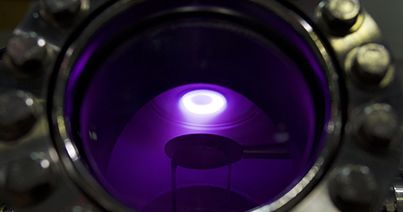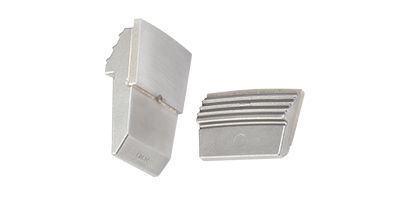Introduction of Boron Nitride Ceramics
In the high-stakes world of semiconductor fabrication, materials used within process equipment must meet an array of exacting requirements: thermal stability under rapid cycling, chemical inertness in plasma or reactive environments, dimensional stability, electrical insulation, and purity (minimal contamination). Over time, advanced ceramics have gained traction across the semiconductor value chain; not just as passive insulators but as active enablers of higher yield, reduced contamination, and long durability.
This article delves into the role of machinable ceramics and ceramic powders / coatings in semiconductor manufacturing, with a particular emphasis on Boron Nitride (BN) due to its rising prominence (including in the product lines of Kennametal and other specialty suppliers). We compare BN with other candidate ceramics (e.g. alumina, silicon carbide, aluminum nitride) and examine real use cases, limitations, and supply implications.
The Landscape of Advanced Ceramics in Semiconductor Applications
Before zooming in on Boron Nitride, it’s useful to see the broader ecosystem: which ceramics are used today, for what, and why.
Use Cases of Ceramics in Semiconductor Tools & Equipment
According to industry overviews, ceramics in semiconductor manufacturing are already deployed in:
- Wafer holders, chucks, susceptor plates, springs, spatulas, spacers, protective tubes (for high-temperature furnaces)
- Crucibles and containment vessels for crystal growth (e.g. Czochralski process)
- Plasma chamber liners or internal parts resisting reactive species
- Thermal management modules (substrate carriers, heat spreaders)
- Hybrid / co-fired ceramics in multi-layer modules or embedded passives
These roles demand a combination of thermal, mechanical, electrical, and chemical properties.

Key Performance Requirements for Ceramics in Semiconductor Use
Below is a summary of the key properties and tradeoffs:
Property | Importance in Semiconductor Use | Typical Requirements / Notes |
Thermal conductivity | To dissipate heat uniformly and avoid hotspots | Some ceramics have anisotropic conductivities; direction matters |
Coefficient of thermal expansion (CTE) | To minimize mechanical stress during heating / cooling | Matching or tolerating mismatch with Si, SiC, metals |
Thermal shock resistance | Rapid ramping (heating/cooling) is common | Low thermal expansion, crack-resistance, high toughness |
Electrical insulation / dielectric strength | Many parts are in high-voltage or plasma environments | High resistivity, high dielectric breakdown strength and transparency to electromagnetic field. |
Chemical inertness / corrosion resistance | Exposure to gases, plasmas, etchants, acids | Minimize contamination, avoid reaction with process gases |
Purity / low contamination / low impurity content | Contaminants can kill yields (e.g. metal ions) | Ultra-high purity materials, tight control on trace elements |
Machinability | Many parts are custom-shaped, require tight tolerances | Some ceramics are brittle and expensive to machine |
Mechanical strength / fracture toughness | To survive vibrations, stress, handling | Ceramics are brittle by nature — toughening strategies are needed |
Because no single material optimally balances all these traits, in practice engineers often accept trade-offs or design hybrids / composites.
Comparative Overview: BN vs Other Ceramics
To position BN, consider some other advanced ceramics often used (or considered) in semiconductors:
- Alumina (Al₂O₃): widely used, low cost, good electrical insulation, moderate thermal conductivity. However, its thermal performance (especially in high-power or high-flux applications) is limited, and impurity control becomes challenging at extreme purity levels.
- Silicon Carbide (SiC): excellent thermal conductivity, high strength, and robustness in harsh environments. But high cost, difficulty in machining, and corrosion in certain chemistries limit its use as internal components (though SiC substrates are common in power semiconductor devices).
- Aluminum Nitride (AlN): high thermal conductivity plus electrical insulation (an advantage over SiC). But dense, high-purity AlN is more challenging to sinter, and it may degrade in harsh plasma environments or require protective coatings.
- Silicon Nitride (Si₃N₄): good toughness and thermal shock resistance, but less insulating in some forms, and potential for contamination from residuals.
- Ceramic composites / hybrids: many vendors mix BN with other phases (e.g. BN+SiC, BN+AlN, or include binders) to tailor mechanical or thermal properties. For example, hot-pressed BN composites are common.
Over time, boron nitride has carved a niche precisely where a balanced set of thermal, electrical, chemical, and machinability properties is required—and this niche is growing.
Boron Nitride (BN) in the Semiconductor Domain: Why It’s Gaining Traction
Let’s now drill down into boron nitride: its forms, properties, strengths, and where it shines best in semiconductor environments.
1. Forms of Boron Nitride: Powder, Machinable, CVD / Thin Film
Boron Nitride is not monolithic; one must understand which variant is appropriate:
- Hexagonal Boron Nitride (hBN): The “layered” form, sometimes called white graphite; high temperature stability, good thermal conductivity, excellent electrical insulator, inherently lubricious (low friction). Many machinable ceramics are based on hBN. These range in purity from very high purity to having binders such as calcium borate to control water absorption or boric oxide for legacy semiconductor process.
- Pyrolytic BN / PBN / CVD BN films / coatings: extremely pure BN produced via chemical vapor deposition, often in thin layers for surface passivation, barrier layers, or as interlayer dielectrics.
- Suspensions / pastes / sprays / coatings: BN powders in suspended or sprayable form are used for coating or lubrication layers.
Kennametal’s portfolio includes both pure and composite BN ceramics. Selecting among these depends on whether you need structural parts, insulating supports, wafer carriers, or thin functional films.

2. Key Thermal / Electrical / Chemical Properties of BN
Here are some representative numbers and behavior (bearing in mind that properties can depend on orientation, purity, binder, processing, etc.):
- Thermal Conductivity (κ): Depending on grade, direction, and density, BN ceramics can exhibit ~ 30 to 400 W/m·K (especially in high-thermal-conductivity composites)
- Dielectric Strength / Resistivity: BN ceramics often exceed 10¹³ Ω·cm at room temperature; dielectric strength can reach tens of kV/mm.
- Thermal Stability: Many BN grades remain stable up to 1,800–2,000 °C in inert or vacuum environments (less stable in oxidizing atmospheres)
- Coefficient of Thermal Expansion (CTE): BN exhibits relatively low thermal expansion; for some grades, from 20 °C to 1,000 °C, ~0.2–0.3 ×10⁻⁶/K (parallel direction)
- Mechanical Strength / Toughness: Properties can be modified depending on binder, composite formulation and density.
- Moisture Sensitivity: Some BN ceramics using borate binders can absorb moisture, which may degrade properties; improved grades (e.g., calcium borate binders) mitigate this.
- Chemical / Corrosion Resistance: BN is largely inert in many environments (plasmas, halogens, etc.), which is why it's often chosen in semiconductor tool environments.
A caveat: In machinable BN blocks, the microstructure is often anisotropic (due to platelet alignment), so property values can differ “in-plane” vs “out-of-plane” (i.e. parallel vs perpendicular to pressing direction).

3. What advantages does BN bring over competing Ceramics?
From the vantage point of the semiconductor industry, BN stands out for a few synergistic reasons:
- Combination of Thermal Conductivity + Electrical Insulation: This is rare. Many ceramics either conduct heat well but are semi-conducting, or insulate electrically but thermally perform poorly. BN gives a “sweet spot.”
- Low Thermal Expansion / Good Thermal Shock Resistance: Because of BN’s low thermal expansion and high thermal conductivity, it is an excellent choice for rapid thermal cycling.
- Machinability / Near-Net-Shape Fabrication: Unlike many ceramics that require grinding, diamond tools, or slow post-processing, machinable BN can be milled, drilled, lapped to tight tolerances. This allows customization for tool OEMs.
- Purity & Low Contamination Risk: High-purity BN is available (including binder-free or minimal binder composites) and is compatible with ultra-clean semiconductor environments.
- Chemical Inertness: In plasma, vacuum, or reactive gas environments, BN resists attack better than many oxides or nitrides.
- Lubricity / Non-Wetting Behavior: The layered structure gives BN a “solid lubricant” effect, which helps reduce friction or sticking in handling tools. BN is also not wetted by most molten metals.
- Tailorability via Composite Grades: When “pure BN” lacks mechanical strength, composite grades (e.g. BN + silica, BN + AlN or SiC) can enhance it while preserving core properties.
Taken together, BN is often preferred not because it's perfect in one dimension, but because it is excellent in multiple dimensions essential to semiconductor tools.
4. Applications of BN in Semiconductor Manufacturing
Here are some real or potential domains where BN is or can be used:
4.1. Wafer Supports, Susceptor, Chuck Parts, Heater Fixtures
In high-temperature furnaces (e.g. diffusion, epitaxy, annealing), BN parts are used as wafer supports, retention rings, and fixtures. Because BN resists warping and outgassing, and has favorable thermal conduction, it helps maintain stable temperature fields
4.2. Crystal Growth (Czochralski / Float Zone)
In single-crystal pulling, BN tubes help control heat flow and resist contamination. Kennametal explicitly promotes its hot-pressed BN ceramics for Czochralski operations to improve lifetime.
4.3. Plasma / Etching / Deposition Chamber Components
Inside plasma reactors, chamber liners, gas baffles, support rods, or protective parts can rely on BN to resist erosion and contamination. Its chemical inertness and electrical insulation are critical here.
4.4. Thin Film / 2D Device Interfaces
In advanced device prototyping or research, hBN films (CVD, epitaxial) are being investigated as insulating barriers, tunnel dielectrics, or buffer layers (especially in 2D heterostructure electronics). One recent preprint addresses delamination mitigation in epitaxial BN for semiconductor processing.
4.5. Thermal Management & Heat Spreaders
Because BN has directional thermal conductivity, it is considered for heat spreaders or thermal interface layers in power modules or in high-power semiconductor modules. While not yet ubiquitous, research is ongoing into BN-enhanced composites (e.g. AlN/BN combinations) to boost thermal performance.
4.6. Other Niche / Emerging Applications
- Plasma-facing components in specialty equipment
- Quantum / cryogenic devices — the stability of BN under extreme temperature swings is of interest



5. Challenges, Limitations, and Mitigation
While BN is powerful, it is not a panacea. Some of the practical concerns:
- Brittleness & fracture risk: as with all ceramics, BN parts must be designed to avoid sharp stress concentration; care in mounting and handling is essential.
- Binder and moisture sensitivity: some BN grades utilizing borate binders may absorb moisture, impairing dielectric or mechanical behavior. Hence, choice of binder and storage becomes critical.
- Anisotropy of properties: the platelet alignment during pressing means in-plane vs out-of-plane thermal or mechanical properties can differ, so orientation must be considered.
- Limitation in oxidizing atmospheres: At high temperatures in oxygen, BN can oxidize; protective coatings or environments are required.
- Cost and supply considerations: High-purity BN typically comes at a higher price point compared to commodity ceramics, but it offers far broader performance possibilities. Availability and lead times depend on the specialty supplier, making it an area for collaboration and refinement.
- Integration / adhesion challenges in thin film use: as in the case of epitaxial BN, delamination or adhesion challenges can arise during lithographic processing. The recent preprint addresses this.
Nonetheless, these challenges are well recognized, and many BN suppliers (including Kennametal) provide engineering support and customization to help mitigate them.
Related Articles
- Advanced Ceramics in Semiconductor Manufacturing: The Rise of Boron Nitride SolutionsThis article delves into the role of machinable ceramics and ceramic powders/coatings in semiconductor manufacturing. Read more.This article delves into the role of machinable ceramics and ceramic powders/coatings in semiconductor manufacturing. Read more.
- Explore the Advantages of Silicon Nitride and Sialon CeramicsDiscover the fascinating world of silicon nitride and sialon ceramics. Explore how they make an impact in advanced materials engineering.Discover the fascinating world of silicon nitride and sialon ceramics. Explore how they make an impact in advanced materials engineering.

